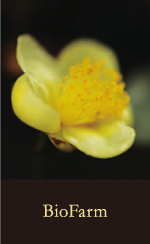
Theanine– Unique Umami of Tea Plants
A number of amino acids, such as the glutamic acid found in konbu (kelp), give us the taste sensations of umami and sweetness. More than 50% of the amino acid content that gives tea its umami and sweet flavor comes from theanine, which can only be found in tea plants or related species. While very similar in structure to glutamic acid, theanine produces a more refined umami and elegant sweetness. In addition to theanine, tea leaves also contain glutamic acid, aspartic acid, arginine and serine.
Younger tea leaves contain higher amounts of theanine, and the content decreases as the tea leaves mature. Growing tea leaves in the shade with a covering–the method for gyokuro cultivation–limits degeneration of the amino acids, allowing the production of tea leaves rich in the flavors of umami and sweetness provided by theanine. This explains why shincha (first-picked tea of the season) and gyokuro have very intense umami and sweet flavors, and why nibancha and bancha teas picked in the second or subsequent flushes are much lighter in taste than ichibancha and ryokucha respectively.
Umami Components – Content and Comparison
Konbu (Kelp): approximately 2240mg/100g of glutamic acid Ryokucha (Green Tea): approximately 600mg~2g/100g of theanine + approximately 668mg/100g of glutamic acid = approximately 1268~2668mg/100g in total *Within green tea, theanine content is higher in varieties closer to shincha and gyokuro.
Composition of Green Tea Flavor
Umami and Sweetness = theanine, glutamic acid Astringency = catechins (polyphenols) Bitterness = caffeine Other elements found in green tea include vitamins (vitamin C, vitamin B2, folic acid, β-carotene, vitamin E) saponine, flurorine, γ-aminobutyric acid, minerals (potassium, calcium, phosphorous, manganese) and chlorophyll.
Green Tea and Genes for Longevity
Recent research has shown that mutual synergies between the various functional substances found in plants, known as phytochemicals, have the positive impact of increasing vitality and strengthening our bodies’ regenerative abilities, thus having a very positive influence on our “genes for longevity”. For example, catechins found in green tea aid in reducing and maintaining low levels of body fat by combating obesity, maintaining good lipid metabolism, and minimizing cholesterol, thereby creating the necessary conditions to activate the genes responsible for long life. While daily vigorous stimulation of the five senses through scents and flavors, laughter, and mental and physical exercise is very important to the activation of the responsible genes, it is great to know that green tea, a constant in Japanese daily life, is also a friend for achieving longevity.
Source: “Study and Analysis of Physiological Molecules for Health and Longevity” (translation of Japanese title) by Kazuichi Sakamoto, Tsukuba University Professor of Life and Environmental Sciences.




